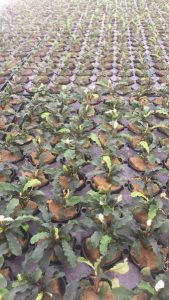 First of all I just want to say is this just to my research I’ve also learned from some people and gather the knowledge. I live in Indonesia in West Borneo, the part of the world where buce just lives in our place. It is very beautiful, rare, and interesting. Demand for the aroid plant bucephalandra from around the world caused the price of the plant to soar up.
First of all I just want to say is this just to my research I’ve also learned from some people and gather the knowledge. I live in Indonesia in West Borneo, the part of the world where buce just lives in our place. It is very beautiful, rare, and interesting. Demand for the aroid plant bucephalandra from around the world caused the price of the plant to soar up.
So we collect this plant from the wild in West Borneo. The fact is that this plant grows very slowly. It took several weeks to grow just a few leaves and I realized the plant is threatened with extinction. Before it’s too late my friends and I are trying to do some things that we can see the beautiful plant is still alive in the jungle. There is actually a lot of interesting aspects of
It was around 2011 when we started to hunt the plant for aquarium hobbyists. After hearing the price was expensive we became interested in looking for it. We went, not very far from our village, around the falls and we collected buce and then sold it.
There are a lot of kinds of buce growing and we looked for a few special kinds to sell. Some are more sought out than others but almost all buce will sell.
In Sanggau the plant is growing poorly because there are lots of palm oil plantations and you know buce will not be able to grow as the temperature rises. The palm oil plantations will cut down all the trees when planting the oil palm and it makes some places growing buce lost.
Even if it isn’t destroyed completely it can make it unable even to grow again there without help.
The need for cooking oil is on the rise. This makes the country receive many offers from foreign nations to cooperate in oil palm plantations. You know the Kalimantan forest has a very wide area of palm oil plantations. Investors come down the island more and more and open the jungle up for oil palm plantations. Many people choose to rent their land to the company. Many companies come to open in the area where buce grows. And you know they cut down all the trees.
The river gets hot around the destroyed forest and buce is soon dead. There is no way to make it live in the summer but if you wait for the season to cool it can grow into lush clumps with the return of cold and cool temperature and water.
To overcome the problem with oil palm damage we have to figure a way to keep buce from becoming extinct. We stopped collecting in excess and changed some of the ways we collect the plants from the wild. We’ll just take a part of a clump and leave much of it there to keep growing.
We’ve also made places for buce to grow, such as moving some rocks off into the edge of the river. Despite the long amount of time it takes to grow buce it can gradually cover the rock with bucephalandra. When we take the buce and plant it at home we have not seen the same results but it does grow quite well.
We also began to change the system to sell. We used to sell buce clumps by the pound or kilo. Now we’re more likely to sell it by the clump, in smaller amounts.
We have also submerged certain kinds of buce in order to change the color of the leaves. Brownie pieces, for example, if we keep her for a few months submerged in water the leaves will change from the collected green and can be turned into a red color.
My friends and I started to think about how buce can be helped to grow more rapidly because there are cases, in some places, where buce thrives and looks more refreshed. If we do nothing we will surely lose the beautiful bucepahalandra forever. This is why my friends and I began to propagate bucephalandra at home and work in the jungle to help it grow in places it has been destroyed because of clearing the jungle for palm oil.
by Oteh Hamid Munawar
photos: Oteh Hamid Munawar
 Biotope One A Study of Flora and Fauna
Biotope One A Study of Flora and Fauna 


